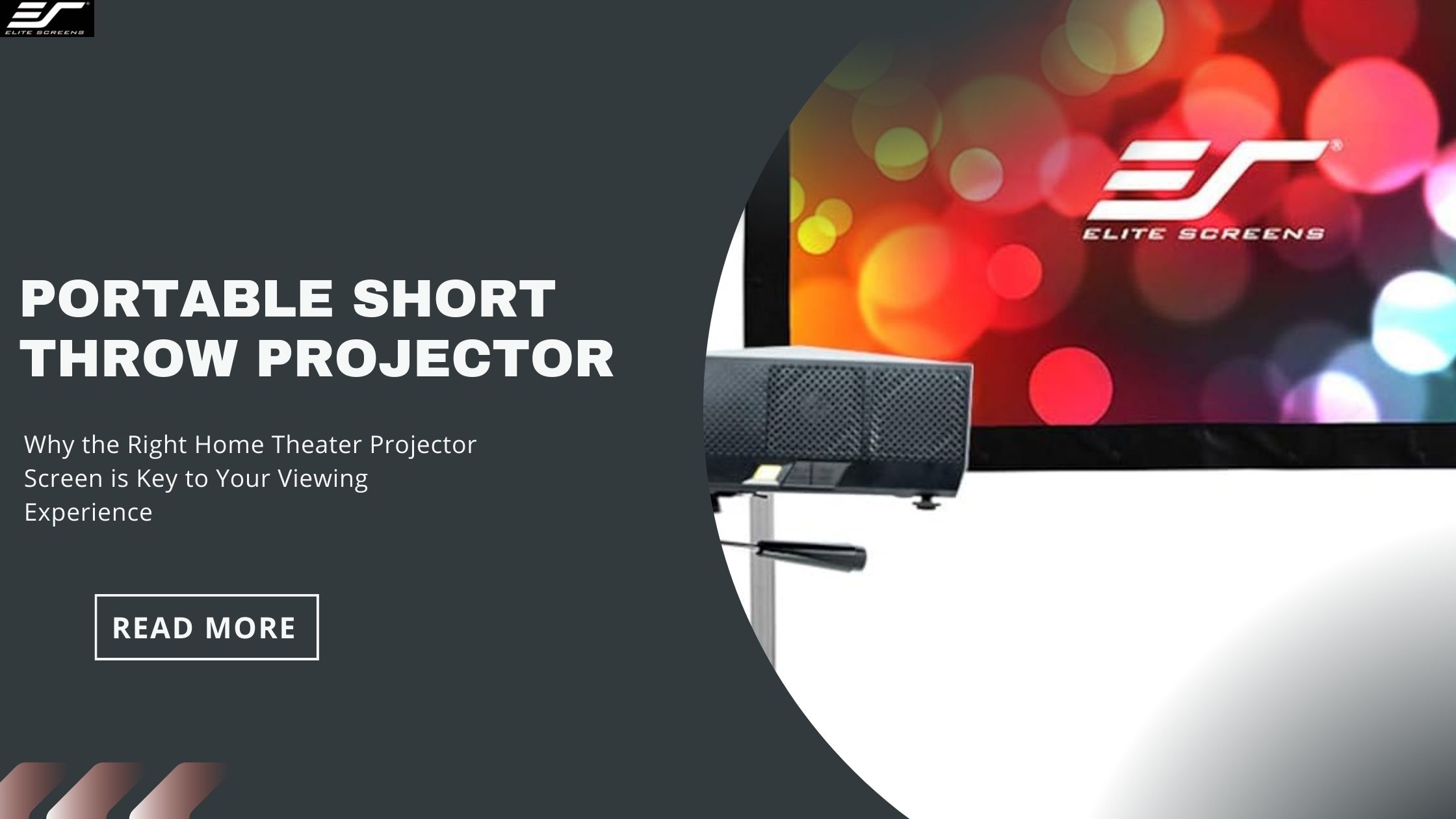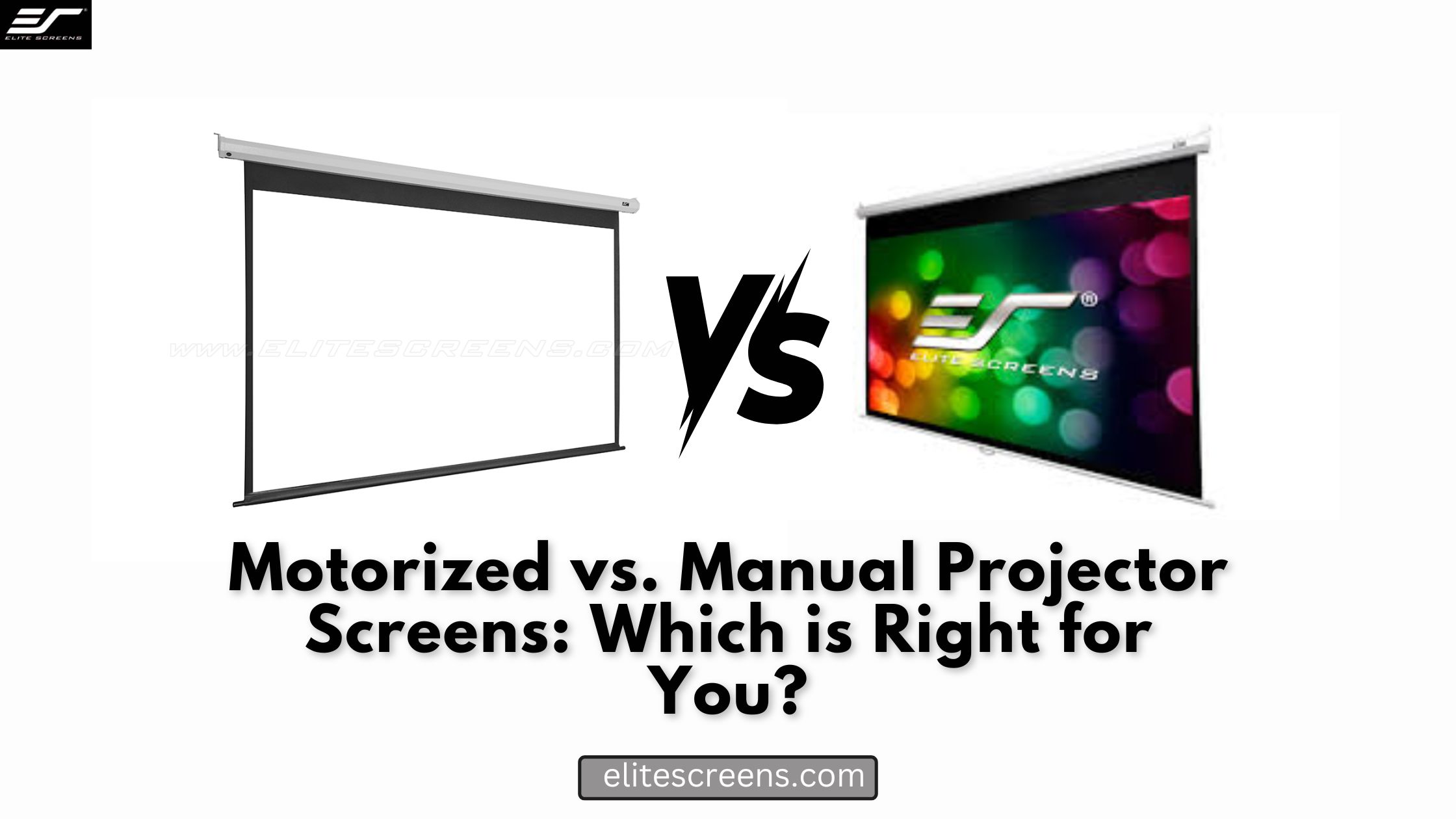Why Rising Projector Screens Are Ideal for Small Spaces

In today’s compact living environments, making the most of available space is crucial. This is where rising projector screens come into play, offering an innovative solution for home entertainment enthusiasts and professionals alike. In this comprehensive guide, we’ll explore why rising projector screens are the perfect choice for small spaces, delving into their benefits, features to look for, installation tips, and real-world applications.
The Benefits of Rising Projector Screens
Space-saving Design
One of the most significant advantages of rising projector screens is their space-saving design. Unlike traditional fixed screens that permanently occupy wall space, rising projector screens can be discreetly tucked away when not in use. This feature is particularly valuable in small apartments, home offices, or multipurpose rooms where every inch counts.
A rising projector screen can be installed in a variety of locations, such as:
-
Ceiling recesses
-
Custom-built cabinets
-
Under-floor compartments
-
Behind false walls
When you need to use the screen, it smoothly rises into position, transforming your space into a home theater or presentation area. Once you’re done, it disappears just as easily, leaving your room clutter-free and versatile.
Versatility in Placement
Rising projector screens offer unparalleled flexibility in terms of placement. Unlike fixed screens that require a dedicated wall, these screens can be installed in various locations within a room. This versatility allows you to optimize your space layout without compromising on the viewing experience.
Some creative placement options include:
-
Rising from a custom-built coffee table
-
Emerging from a bookshelf
-
Ascending from a sleek console table
-
Appearing from a ceiling trap door
This adaptability makes rising projector screens an excellent choice for rooms with limited wall space or unusual layouts.
Easy Integration into Existing Decor
Another significant advantage of rising projector screens is their ability to seamlessly blend with your existing decor. When retracted, these screens are virtually invisible, preserving the aesthetics of your room. This feature is particularly valuable in meticulously designed spaces where a permanent screen might disrupt the visual harmony.
Many rising projector screens come in a variety of finishes and housing options, allowing you to choose one that complements your interior design. Whether your style is modern, traditional, or eclectic, there’s likely a rising screen solution that will integrate perfectly with your decor.
Improved Viewing Experience
Despite their compact nature, rising projector screens don’t compromise on image quality. In fact, they can enhance your viewing experience in several ways:
-
Optimal viewing height: Most rising screens can be adjusted to the perfect height for comfortable viewing, reducing neck strain during long movie sessions or presentations.
-
Reduced ambient light interference: When not in use, rising screens are protected from dust and ambient light, which can degrade image quality over time.
-
Taut screen surface: The rising mechanism ensures that the screen remains perfectly flat when extended, eliminating wrinkles or waves that can distort the projected image.
Features to Look for in Rising Projector Screens
When choosing a rising projector screen for your small space, consider the following features:
Motorized vs. Manual Operation
Rising projector screens come in both motorized and manual variants. Motorized screens offer the ultimate in convenience, allowing you to deploy or retract the screen at the touch of a button. Some advanced models even integrate with smart home systems, enabling voice control or scheduling.
Manual screens, on the other hand, are typically more affordable and don’t require electrical installation. They’re operated using a simple pull-down mechanism, similar to window shades. While they require a bit more effort to use, manual screens can be an excellent choice for budget-conscious buyers or spaces where electrical outlets are limited.
Screen Material and Quality
The quality of your projected image depends significantly on the screen material. Look for screens with the following characteristics:
-
High gain: This measures the screen’s reflectivity. A higher gain results in a brighter image but may reduce viewing angles.
-
Color accuracy: Opt for screens with neutral color reproduction to ensure true-to-life images.
-
Ambient light rejection: If your room isn’t completely dark, consider screens designed to minimize the impact of ambient light.
-
Durability: Choose materials that are resistant to yellowing, easy to clean, and maintain their properties over time.
Screen Size and Aspect Ratio Options
Rising projector screens come in various sizes and aspect ratios to suit different needs. Common aspect ratios include:
-
16:9 – Ideal for most modern content, including HD and 4K movies
-
4:3 – Suitable for older TV shows and some computer presentations
-
2.35:1 – Perfect for cinematic widescreen movies
When selecting a screen size, consider your room dimensions and typical viewing distance. A general rule of thumb is to choose a screen width that’s about half the distance from the screen to your seating area.
Compatibility with Different Projector Models
Ensure that your chosen rising projector screen is compatible with your projector model. Consider factors such as:
-
Throw ratio: This determines how far your projector needs to be from the screen to achieve the desired image size.
-
Brightness: Match your screen’s gain with your projector’s lumen output for optimal image quality.
-
Resolution: Choose a screen that can fully display your projector’s maximum resolution without pixelation.
Installation and Maintenance Tips for Rising Projector Screens
Proper Mounting Techniques
Correct installation is crucial for the optimal performance of your rising projector screen. Here are some tips:
-
Use a stud finder to locate secure mounting points in your ceiling or wall.
-
Ensure the mounting surface is level to prevent uneven screen deployment.
-
Follow the manufacturer’s instructions carefully, paying attention to weight limits and electrical requirements for motorized screens.
-
Consider hiring a professional for complex installations, especially if custom cabinetry or in-wall wiring is involved.
Cleaning and Care Instructions
To maintain your rising projector screen’s performance and longevity:
-
Dust the screen regularly with a soft, lint-free cloth.
-
For stubborn stains, use a mild soap solution and gently blot (don’t rub) the affected area.
-
Never use harsh chemicals or abrasive cleaners on the screen surface.
-
Keep the screen retracted when not in use to protect it from dust and damage.
Adjusting Screen Tension
Some rising projector screens allow you to adjust the screen tension to ensure a perfectly flat surface:
-
Check your screen periodically for wrinkles or waves.
-
Use the tension adjustment screws (if available) to fine-tune the screen’s flatness.
-
Be careful not to over-tighten, as this can damage the screen material.
Real-life Applications and Success Stories
Rising projector screens have found success in various small-space applications:
-
Home theaters in studio apartments: Many urban dwellers have transformed their compact living spaces into impressive home theaters using rising screens.
-
Multi-functional office spaces: Businesses have integrated rising screens into conference rooms that double as workspaces, maximizing the utility of limited square footage.
-
Educational environments: Schools and universities use rising screens to create flexible learning spaces that can quickly transition from lectures to group work.
-
Restaurants and bars: Some establishments use rising screens to create impromptu sports-viewing areas without permanently altering their decor.
Comparing Rising Projector Screens with Traditional Fixed Screens
While fixed screens have their place, rising projector screens offer several advantages in small spaces:
-
Flexibility: Rising screens can be hidden when not in use, unlike fixed screens that permanently occupy wall space.
-
Multi-purpose room compatibility: Rising screens allow rooms to serve multiple functions without compromise.
-
Aesthetic preservation: When retracted, rising screens don’t impact your room’s design aesthetic.
-
Potential for larger screen sizes: By utilizing ceiling or floor space, rising screens can often be larger than what wall-mounted options allow in small rooms.
Conclusion
Rising projector screens represent an innovative solution for small-space entertainment and presentation needs. Their space-saving design, versatility in placement, and seamless integration with existing decor make them an ideal choice for those looking to maximize their living or working areas.
By carefully considering features such as motorization, screen material, size options, and compatibility with your projector, you can select a rising projector screen that perfectly suits your needs. With proper installation and maintenance, these screens can provide years of enjoyment and functionality, transforming your small space into a versatile entertainment or professional environment.




